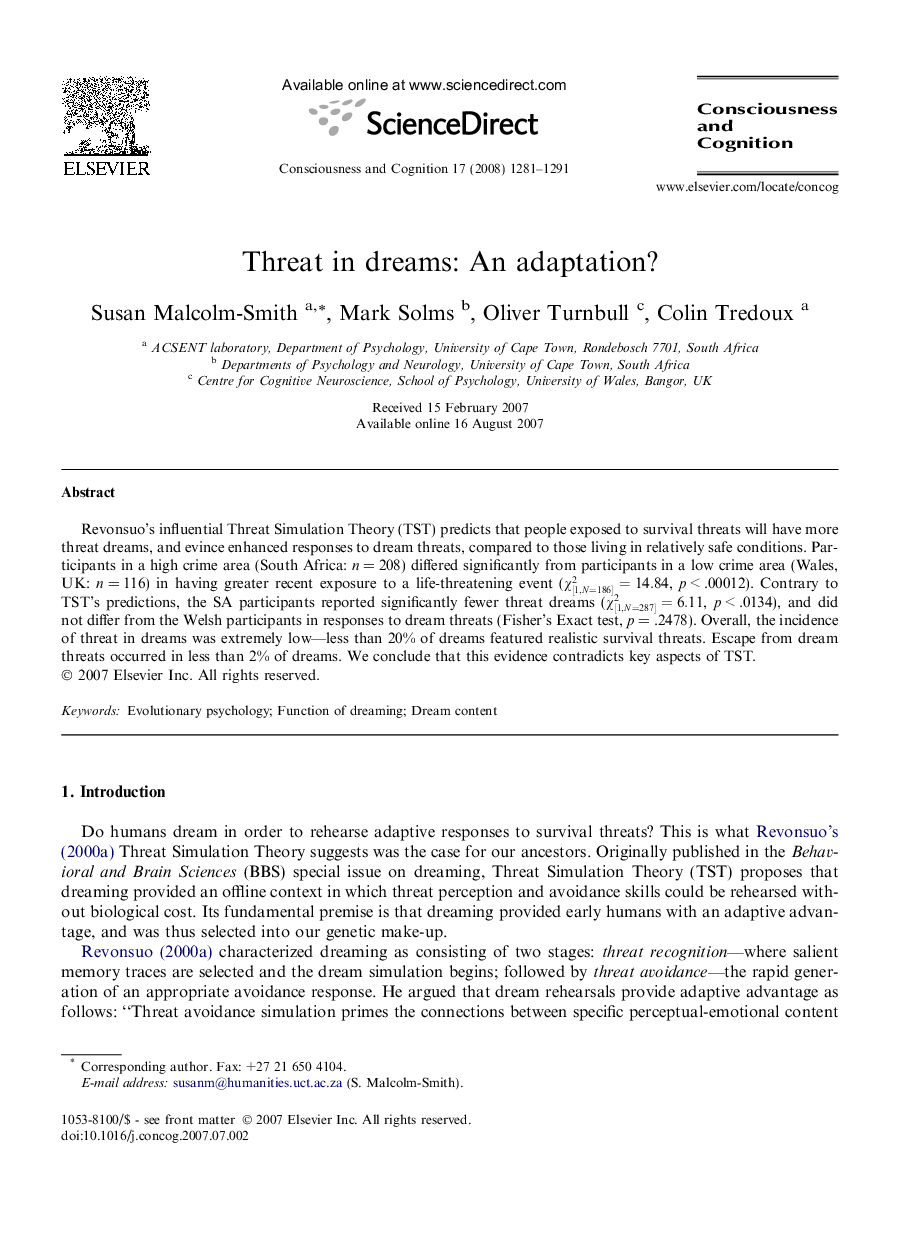| Article ID | Journal | Published Year | Pages | File Type |
|---|---|---|---|---|
| 928018 | Consciousness and Cognition | 2008 | 11 Pages |
Revonsuo’s influential Threat Simulation Theory (TST) predicts that people exposed to survival threats will have more threat dreams, and evince enhanced responses to dream threats, compared to those living in relatively safe conditions. Participants in a high crime area (South Africa: n = 208) differed significantly from participants in a low crime area (Wales, UK: n = 116) in having greater recent exposure to a life-threatening event (χ[1,N=186]2=14.84, p < .00012). Contrary to TST’s predictions, the SA participants reported significantly fewer threat dreams (χ[1,N=287]2=6.11, p < .0134), and did not differ from the Welsh participants in responses to dream threats (Fisher’s Exact test, p = .2478). Overall, the incidence of threat in dreams was extremely low—less than 20% of dreams featured realistic survival threats. Escape from dream threats occurred in less than 2% of dreams. We conclude that this evidence contradicts key aspects of TST.
